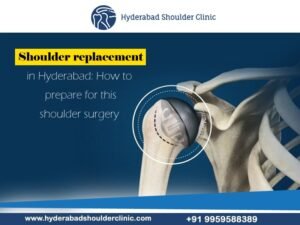Rehabilitation plays an integral part after rotator cuff tears treatment, whether nonsurgical or surgical.
Frequently, a tear causes muscles around the arm to be weak and results in the loss of shoulder range of motion. To restore your shoulder’s lost strength and function, an exercise or physical therapy program is required.
Despite the repair of the tendon defect, there will be a lack of strength in the arm muscles. Therefore, rehabilitation is essential for a successful procedure and to recover quickly. A complete rehabilitation following rotator cuff repair surgery might take several months.
An orthopaedic shoulder surgeon will always design a rehab program depending on your needs and the results of your surgery.
Importance of rehabilitation in rotator cuff tear treatment

However, the main purpose of a rehabilitation program following rotator cuff surgery is to prevent shoulder stiffness by maintaining the tendon to the bone attachment. The most effective rehabilitation program involves clear communication between the surgical and physical therapy teams.
To create a proper rehabilitation plan for the patient, the therapists analyze all the details of the procedure, like the size of the rotator cuff tear, which tendons are involved, tissue quality, and the technique used for the repair.
A physical therapist must keep in mind that every patient is unique, and every tear in the rotator cuff is different. For instance, elderly patients or those with severe rotator cuff tears typically need a slower rehabilitation program to prevent recurrent tears. However, young patients or those with minor tears with healthy tissues may experience a faster recovery.
Additionally, there are exists a few risk factors following the surgery, and they can be prevented with the help of an early rehabilitation protocol. The risk factors following a rotator repair include adhesive capsulitis – postoperative stiffness and pain, labral repairs, single tendon tears, and calcific tendinitis & diabetes.
Therefore, close communication between the patient, surgeon and rehabilitation therapy expert is very important throughout the rehabilitation process for a successful recovery for the patient.
Points to remember
In the case of a tear that requires surgery, you will probably need to wear a sling after surgery for a few weeks. The common rehab timeline for many people involved in physical therapy is anywhere between 3-6 months. Physical therapy sessions become less frequent over time, but the home-based program continues.
Different rotator cuff repairs will have different postoperative care, and a physician might modify it depending on the procedure performed. Most rotator repairs involve placing your arm in a sling with a pillow to wedge far from the body to relieve stress from the repaired rotator cuff.

The first phase of your rehabilitation might last around 6 weeks and, during this phase, you can’t move your shoulder or do things on your own. Your physical therapist helps you with your shoulder movements and might help you arrange a pulley system at home to continue this passive motion. Don’t try to move your shoulder until your tendon is healed completely, as it may interfere with the healing process.
Most people find that propping up in bed with a pillow behind their shoulders helps them feel better. Some people even feel better in a recliner. These two options appear to provide more comfort than lying flat in bed.
Last but not least, a physical therapist must consider the clinical goals, the pre-operative activities, and the patient’s needs.
This process involves extensive conversations with the patient before and after the surgical procedure to ensure all the details of the patients related to recovery are covered. This will ensure patients return to their normal daily activities.
If you have any shoulder problems, consult Dr Chandra Sekhar B, the best shoulder surgeon in Hyderabad.





